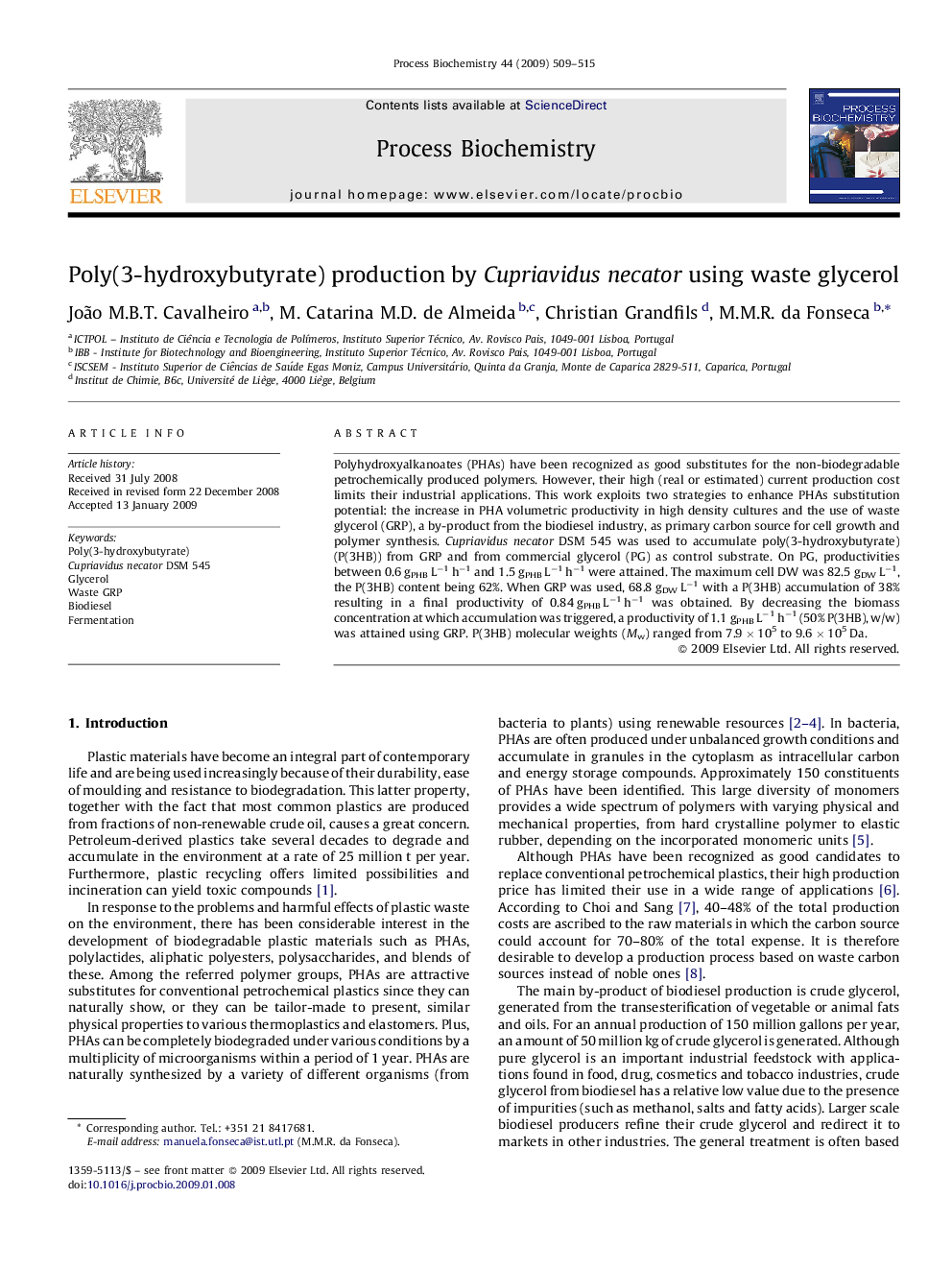| Article ID | Journal | Published Year | Pages | File Type |
|---|---|---|---|---|
| 35433 | Process Biochemistry | 2009 | 7 Pages |
Polyhydroxyalkanoates (PHAs) have been recognized as good substitutes for the non-biodegradable petrochemically produced polymers. However, their high (real or estimated) current production cost limits their industrial applications. This work exploits two strategies to enhance PHAs substitution potential: the increase in PHA volumetric productivity in high density cultures and the use of waste glycerol (GRP), a by-product from the biodiesel industry, as primary carbon source for cell growth and polymer synthesis. Cupriavidus necator DSM 545 was used to accumulate poly(3-hydroxybutyrate) (P(3HB)) from GRP and from commercial glycerol (PG) as control substrate. On PG, productivities between 0.6 gPHB L−1 h−1 and 1.5 gPHB L−1 h−1 were attained. The maximum cell DW was 82.5 gDW L−1, the P(3HB) content being 62%. When GRP was used, 68.8 gDW L−1 with a P(3HB) accumulation of 38% resulting in a final productivity of 0.84 gPHB L−1 h−1 was obtained. By decreasing the biomass concentration at which accumulation was triggered, a productivity of 1.1 gPHB L−1 h−1 (50% P(3HB), w/w) was attained using GRP. P(3HB) molecular weights (Mw) ranged from 7.9 × 105 to 9.6 × 105 Da.
